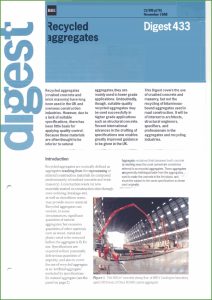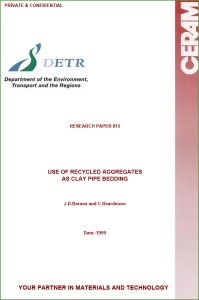Publications
We hope you find these publications useful to answer your clay drainage system questions.
 |
 |
| BRE Digest 433
Recycles Aggregates |
Research Paper 815
Use of Recycled Aggregates |
We hope you find these publications useful to answer your clay drainage system questions.
 |
 |
| BRE Digest 433
Recycles Aggregates |
Research Paper 815
Use of Recycled Aggregates |